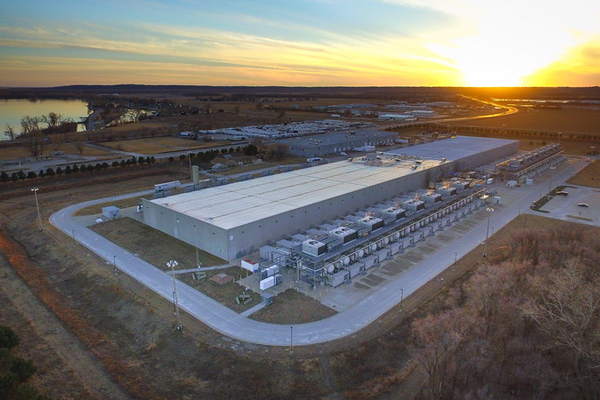Summary
Depending on the form it takes, digitalisation has the potential to either help or hinder the fight against climate change. Reconciling these two trends or transitions to ensure they complement each other is one of the great challenges of our time, more so given that both are essential parts of the economic and social recovery and transformation following the crisis caused by COVID-19. Technology –including digitalisation (of which artificial intelligence is just one example)– has become an indispensable tool for achieving the objectives of a green economy without pollution. Yet technology itself is also responsible for a significant amount of pollution. While the exact figures are up for debate, studies have found that between 2018 and 2020 the digital sector was responsible for around 3% of global primary energy consumption and 7% of electricity consumption, generating 5% of global CO₂ emissions.1 The electricity consumed by the digital sector is increasing rapidly (9% a year), although its effects on the climate are closely linked to the source of the energy used (whether it comes from fossil fuels that emit greenhouse gases or from clean sources). This is a key aspect and an area in which both business and national, European and international institutions are finally starting to make progress. This Working Paper analyses the overall contribution of information and communications technology (ICT) to the fight against climate change, as well as its direct and indirect impact on the emissions of CO₂ and other greenhouse gases and the public-private policies being implemented to ensure the two transitions complement each other. It proposes improving metrics and creating national and European barometers to monitor good practices in this area in both the public and private sectors.
Introduction
We often think of the digital world as something lightweight, far removed from the physical bulk and energy consumption of traditional industry. However, this is not the case. We live in a world full of computers, of all shapes and sizes, with thousands of miles of copper and fibre-optic cables to facilitate the circulation of information, enormous data centres, antennas (outside and inside our homes and offices), constellations of satellites and myriad user terminals whose manufacturing and use consume large amounts of energy. All this means that, as we stand at the dawn of the Fourth Industrial Revolution, advanced artificial intelligence (AI) systems have a considerable carbon footprint. Failing to check the CO₂ emissions caused by the exponential growth of digitalisation will jeopardise the decarbonisation objectives for both 2030 and 2050.
One of the biggest challenges of our time is reconciling the inexorable progress of a necessary digitalisation with efforts to deliver a green economy.3 One of the biggest challenges of our time is reconciling the inexorable progress of a necessary digitalisation with efforts to deliver a green economy.
Digitalisation –in its multiple dimensions– is an essential part of the fight against climate change and of managing clean technologies. Yet if this process does not take place correctly, it has the potential to exacerbate existing problems and create new ones. Big data and AI have played a key role in modelling climate change and its causes. Digitalisation has the potential to make existing products and activities more efficient or replace them altogether. As the European Commission’s 2030 Digital Compass4(its updated digital strategy5 published just before the pandemic), notes: ‘digital technologies can significantly contribute to achieving the European Green Deal objectives’. In fact, they are essential, since the two transitions are inseparable.
The adoption of digital solutions and the use of data for the transition towards a climate-neutral, circular and more resilient economy, the replacement of business travel by videoconferencing and the use of digital technology to reduce greenhouse gas emissions in agriculture, energy, buildings, industry, urban planning and services can all contribute to the EU objective of reducing greenhouse gas emissions by at least 55% by 2030 and achieving climate neutrality by 2050, making it the world’s first climate-neutral bloc. Digital technologies play a key role in generating energy efficiency measures across all sectors. For example, smart power grids are 90% digital technology and, as the last decade has shown, the incorporation of renewable energies is simply not feasible without them.
Both these trends –digitalisation and the green economy– must achieve a tight-knit and complex coupling. The digital and ecological transitions must go hand in hand.6The COVID-19 recovery and transformation plans initially treated them as two separate transitions. However, they have gradually come to incorporate this coupling, both in terms of using digital technology to achieve environmental objectives and the need for digitalisation to control energy consumption and reduce greenhouse gas emissions.Figure 1. Evolution of key indicators for ICT, 2000-19
| 2000 | 2019 | % de cambio | |
|---|---|---|---|
| Population (a) | 6.1 billion | 7.7 billion | +26 |
| GDP (b) | US$34 trillion | US$87 trillion | +155 |
| Electricity consumption (c) | 14 PWh | 23 PWh | +62 |
| Sustainable energy consumption (d) | 4 exajoules | 28.98 exajoules | +724 |
| Internet users (e) | 300 million | 4.1 billion | +1,260 |
| Internet traffic (f) | 0,9 exabytes | 1,992 exabytes | +28,900 |
Sources: (a) United Nations, 2019; (b) International Monetary Fund, 2020; (c) International Energy Agency, 2020; (d) BP; (e) International Telecommunication Union 2020; (f) CISCO 2018; IEA Presentation, November 2020, although COVID-19 has resulted in a major change in Internet usage.
1 IEA (2020), ‘Energy end-use data collection methodologies and the emerging role of digital technologies’, October, https://www.iea.org/reports/energy-end-use-data-collection-methodologies-and-the-emerging-role-of-digital-technologies.
2 We would like to express our gratitude to Gonzalo Escribano and Lara Lázaro at the Elcano Royal Institute for their valuable feedback on various drafts of this document and to the participants of the Working Group on Climate Change and Technology Transformations on 13/IV/2021. We are also grateful to Borja Adsuara (Consultant), Gloria Álvarez (UC3), Eloy Álvarez (Fundación Deusto), Carlos Arruego (Naturgy), Txetxu Ausín (CSIC), Enrique Herrera (University of Granada), Pablo Martín (Elewit), Laka Mugartza (Tecnalia), Miguel Muñoz (Iberdrola), Maya Ormazábal (Telefónica) and Peter Sweatman (Climate Strategy). However, all opinions expressed here are the sole responsibility of the authors.
3For an overview, see Gregorio Martín Quetglas (2019), ‘¿Qué es la digitalización?’, ARI, nr 64/2019, Elcano Royal Institute.
4 European Commission (2021), ‘2030 digital compass: the European way for the digital decade’.
5 European Commission (2020), Shaping Europe’s digital future, 19/II/2020.
6 Lluís Torrent (2020), “Ecological transition and digitalisation, an essential alliance in the climate decade”.
Google Data Center in Council Bluffs, Iowa (US). Photo: Chad Davis (CC BY 2.0)




